
film poster 2


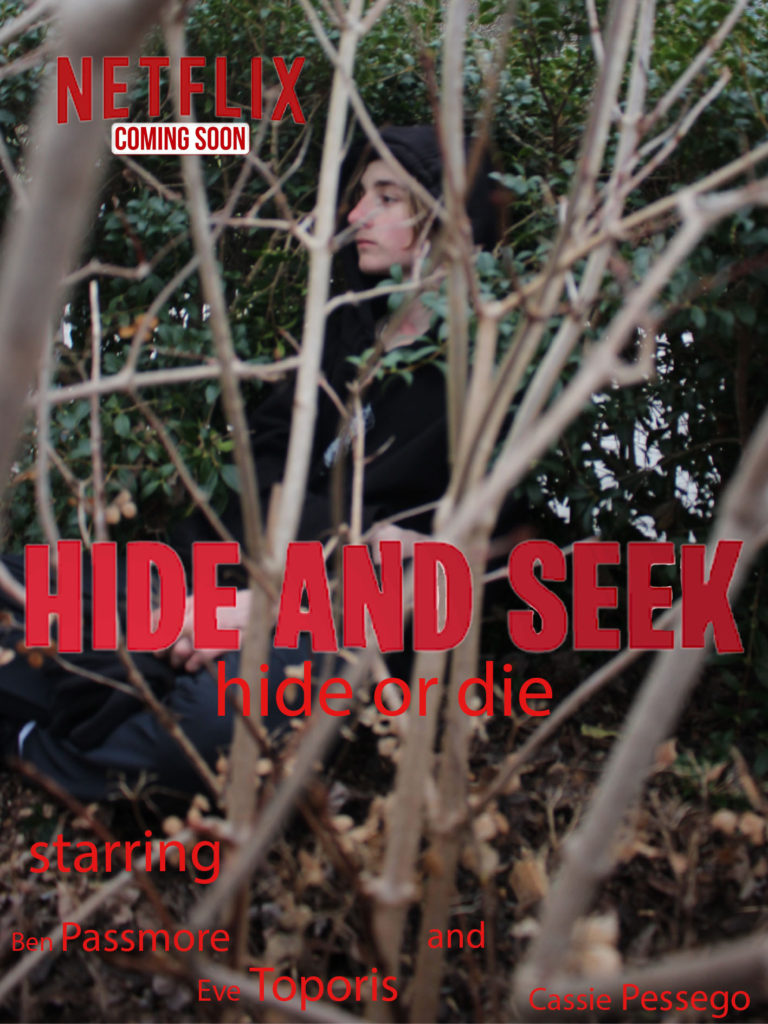
Statement of intent – media
name of film- left on read.
I intend to produce two different posters to advertise my film through including signifiers that link to the narrative I will create and introduce the central concepts, ideas and characters without explicitly revealing the details of the plot. My movie posters will include a character that is a girl in a relationship and is dangerously obsessed with her boyfriend.. I want to produce 2 posters that translate the craziness of her transition from innocent love to stalker. The plot is inspired by a 2000s teen movie and present a very ‘normal’ life the female character lives. I want to represent her on the poster as scary and crazy. I will ensure this image is of a high resolution, so it is the main focal point on the poster. I want the background to obtain essences of a dark reality that goes on in her mind. The poster will be spooky but and psychedelic unlike more dramatic and emotionally movie posters. I like the essence of the Netflix show ‘YOU’ which has a very stalker based, but includes the narratives key objective. The text on my poster will be minimalistic as I don’t want it taking the attention of the central image. I imagine that my posters would be produced by a small, indie company who are owned by a large conglomerate such as ‘Warner Bros’, the two posters would be created for distribution by a streaming platform such as ‘Netflix’ and ‘Amazon Prime Video’. My other poster of my movie will have the same aesthetic of the first poster but from a different perspective. I had in mind maybe them walking away from the back with the chaos in the background. I want my second one to heavier and more interesting on the audience and have a more serious tone to it, she has no idea what she did to be in her position and is a story of her trying to figure out how to deal her struggles.
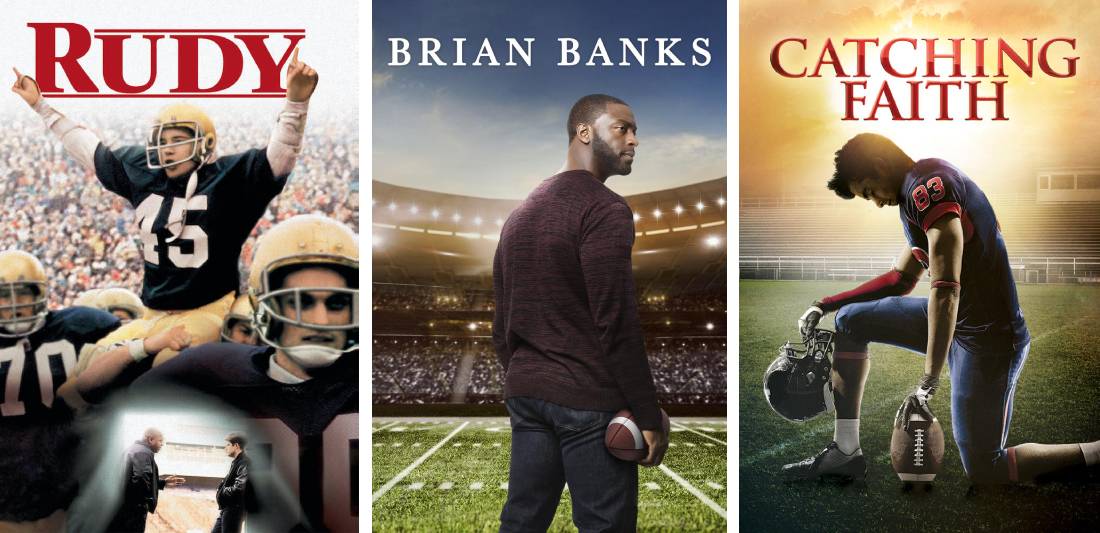
These three posters are part of a collection, and they all contain close up shots of one key dominant signifier. These signifiers show the main characters, being sports players, in a dominant, powerful light and this is reactionary to the audience that would usually consume this kind of product (young to middle aged men). The settings in these film posters are of football pitches/stadiums, and these give connotations of physical activity. The title text is all clearly defined and easy to see, and is often the second sign you will notice after the main character in the centre.

Firstly, this film poster shows a dominant signifier of a sports player, dressed in sports clothing which connotes ideas of physical activity. Unlike the other posters above, however, it contains a lot more text than just the title, such as credits, release date, and the company licensing it. These bits of text are nicely indented to the point that they to not obstruct the view of the dominant signifier, but can be read easily. This creates a paradigm of signs which give information about the film.
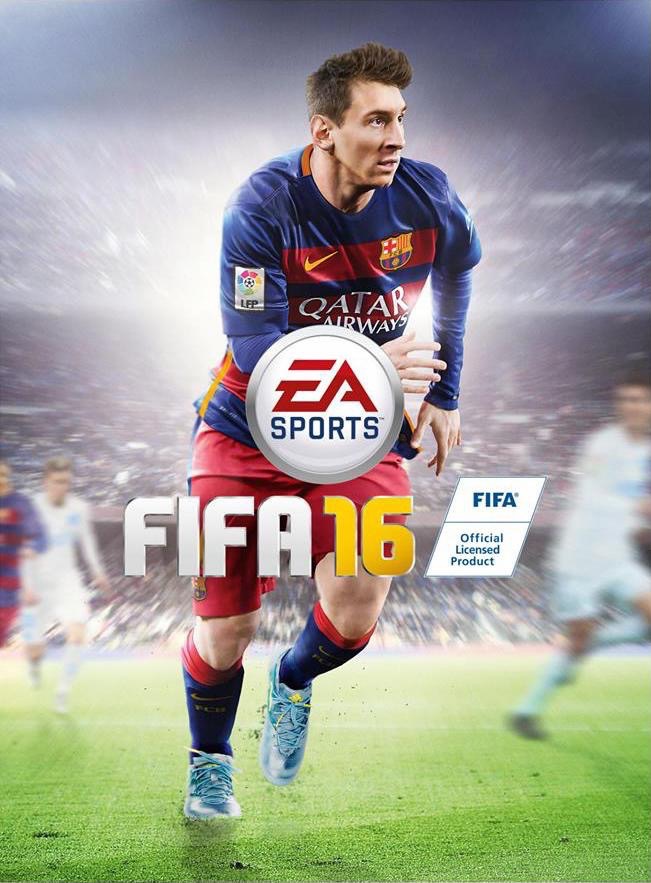
This poster shows a similar dominant signifier, but here he is presented in the middle of running, giving connotations of physical activity. The other signs, such as the text, company logo and licensing label are neatly arranged, and the title text makes use of different colours to stand out from the rest of the elements. The number in the title has a different colour to highlight it, as this is a separate edition of the same film series. The signs cover the dominant signifier in such a way that their face is still showed clearly, and his facial expression remains easy to read in the bullseye shot.
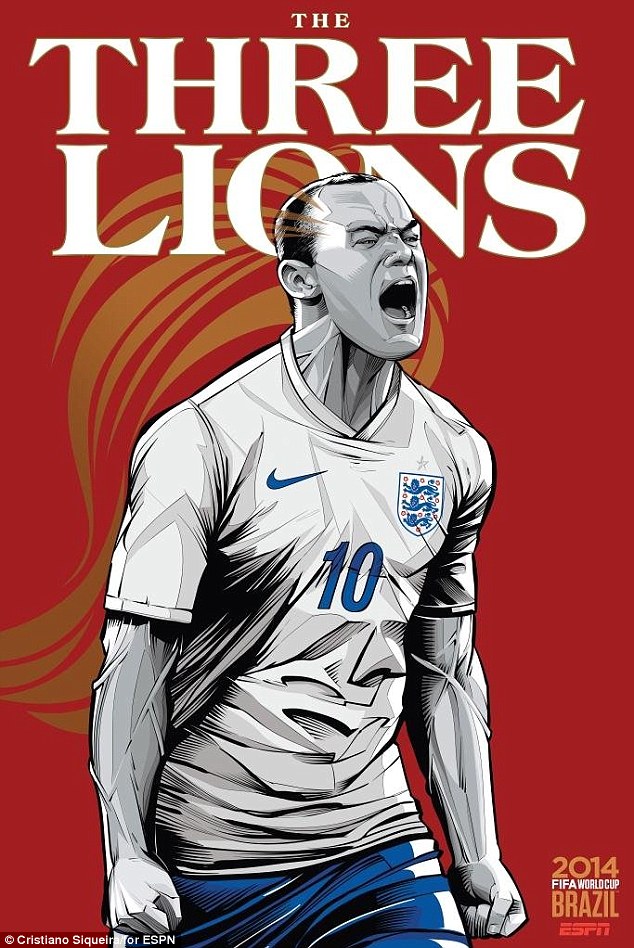
This poster shows once again a single dominant signifier in a similar posture, with details such as copyright information and the event the poster is referencing. The title text, being an icon, is slightly hidden by the dominant signifier. This makes it seem like anchorage and makes it more supplementary than this kind of title text should be, however I think this makes it pleasant to look at.
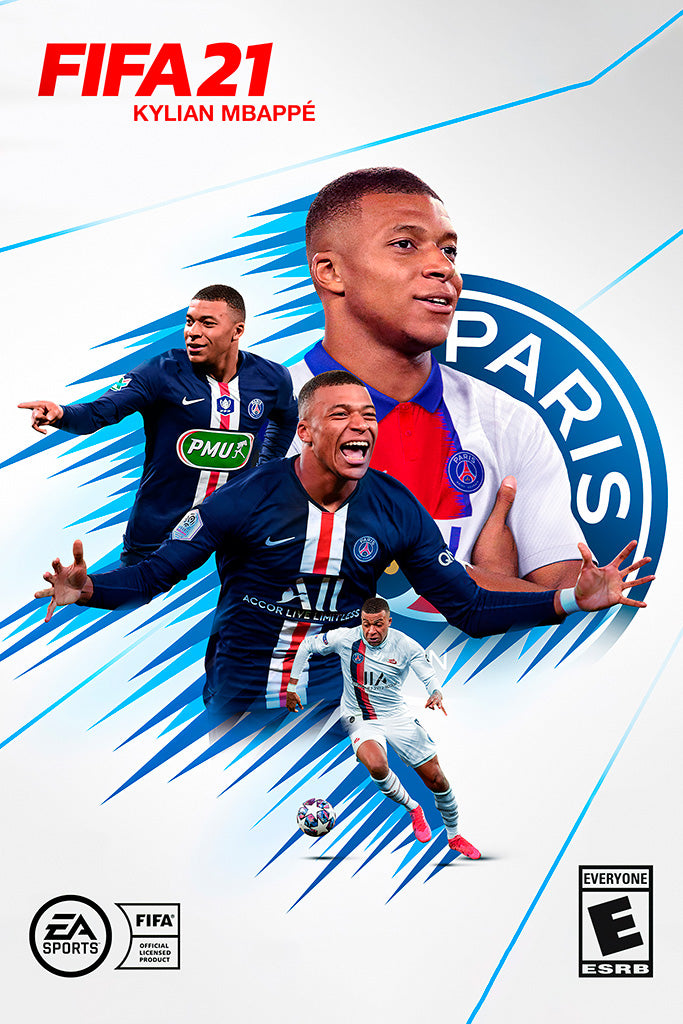
This poster has many images of the dominant signifier, being a football player, partaking in many different sporting actions. They are arranged in such a way that you can easily tell what his facial expressions are, giving connotations of head work and physical activity, and the icons of age rating and company branding are neatly positioned in a way which makes them only relevant if you look for them.
It’s about a poor family and the teen sons parents are struggling to get by, they have one son who wants to become a professional football player but can’t afford to pay for football training so he spends all his time playing street football and playing with his best friend, but his parents want him to get a job to help provide.
In this movie I will have the main character, the hero, being the teen who wants to become a football player. He will have a best friend at the start but then becomes the false hero, he then joins a rival team to his friend after the hero manages to get into a team through very hard work and training and being able to get free training due to his large skill and ability. The false hero will purposefully injure the hero out of spite that the hero is a greater player than him. So the hero has to go back home and start working for his family for a while. After being injured for a while we have a dispatcher (a coach) who convinces him to play again and carry on his training. To where he then gets scouted by a premier league team and this will be the anagnorisis where he earns enough money to provide for him self and his family.
The film will be funded and produced by Warner Brothers. It should have a least a mid level budget due to the simple nature of the story not needing many high level filming attributes or techniques. The poster will have the main hero at the front holding the football in his hands or at his feet, with his friend next to him but slightly behind to indicate his insignificance compared to the main hero and as also a slight foreshadow of his false hero intentions.
The genre of the film will be a feel-good type idea that focuses on a classic and conventional base story line following ideas of the Tripartite narrative structure. The genre would loosely be based on the films techniques and genre of “Blinded By the Light” where he young teenager faces antagonists and hardships to make his dream come true of becoming a professional football player, making his parents proud and taking them out of poverty.
A really good way to think about NARRATIVE STRUCTURE is to recognise that most stories can be easily broken down into a BEGINNING / MIDDLE / END. The Bulgarian structuralist theorist Tztevan Todorov presents this idea as:
In the beginning of a movie such as Harry Potter, his equilibrium is that he lives in a foster home under the stairs and they are disrespectful and unkind to him, then begins the disruption where he finds out he is a wizard and gets sent to Hogwarts when now Voldemort wants to kill him, lastly, there’s the new equilibrium where it goes back to the characters being happy once again and the conflict is over.
A more sophisticated application of Todorov considers and recognises that stories are constructed in ways that test and subvert the three act narrative structure outlined above. A more sophisticated application of Todorov might also consider:
Sometimes there may also be an audience who expect action quickly and have a short attention and quick boredom span, so, Condensed equilibriums:
This structural approach could also be referenced to Freytag’s Pyramid:
exposition, inciting incident, rising action, climax, falling action, resolution, and denouement as illustrated below.

His theory is about narrative structures, as his work (based around an analysis of fairy tales) suggests that stories use STOCK CHARACTERS to structure stories. That is not to say that all characters are the same, but rather to suggest that all stories draw on familiar characters performing similar functions to provide familiar narrative structures.
Simply, Vladimir Propp theorised that although characters may seem different, there are 8 stock character types that they follow that relates to their function in the movie and their personalities.
CHARACTERS FUNCTION TO PROVIDE NARRATIVE STRUCTURE; Here are the 8 Stock Characters:
As Turner makes clear ‘these are not separate characters, since one character can occupy a number of roles or ‘spheres of action’ as Propp calls them and one role may be played by a number of different characters’
However, Propp proposed that his list of stock characters are structured into a narrative that has 31 different functions that play an important role in organising character and story into a plot. Without going into detail for each, overall they can be divided into the following sections:
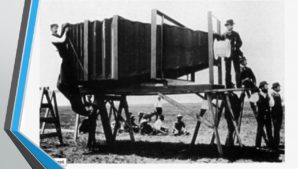
Ok so some more production work! Yippee!
Your MOVING IMAGE NEA is centred around a CROSS-MEDIA PROMOTIONAL CAMPAIGN that asks you to produce the following media products:
As you know I have already brought forward the Film Poster production to accommodate both the AS Photography mock exam and my own absence. Which gave you 3 days in the TV studio and the last 2 days in class (without me) completing your products. Similarly, we put in place some time to complete the Film Sequences production as we looked at the language of moving image. The web design production is similarly staggered as I am away for a few days during this period and our classroom is being used by photography.
As such, although it would be best practice to complete all of your work and upload to the blog by Friday 8th April. However, I will not start marking this work until Monday 18th April. This therefore gives you plenty of time to finish.
The point of art/ aesthetics is about the way in which tragedy occurs to ensure that the characters match with the genre which is done successfully through matter, subjects and method. Make profound truths about life stick in our minds.
Key words
Peripeteia- a change in fortune
Anagnoresis- the point in a play, novel, etc., in which a principal character recognizes or discovers another character’s true identity or the true nature of their own circumstances.
Catharsis- a type of cleaning eg. getting rid of our emotions specifically feelings around pity and fear
In Blinded by the Light, Javed experiences peripeteia when he gets the opportunity to go to writing awards ceremony and gives a speech which changes his family’s perception. For Javed, the catharsis of Bruce’s lyrics represents an escape from his domestic doldrums. Anagnoresis happens at the end of the play when Javed realises that it isn’t all about one person (Springsteen) but about how family and forgiveness will lead to a better life.
The 3 unities
Action- very focused, dramatic action
Place- in a single location
Time- in one day
Key terms
slow motion- playing back video more slowly than it was made or recorded, so that the action appears much slower than in real life.
Stories have a beginning, middle and end or as Todorov describes; equilibrium, disruption, new equilibrium
Links with Freytag’s Pyramid– exposition, inciting incident, rising action, climax, falling action, resolution, and denouement
stories use STOCK CHARACTERS to structure stories
Suggest that all stories draw on familiar characters performing similar functions to provide familiar narrative structures.
the way in which CHARACTERS FUNCTION TO PROVIDE NARRATIVE STRUCTURE:
‘these are not separate characters, since one character can occupy a number of roles or ‘spheres of action’ as Propp calls them and one role may be played by a number of different characters’
Stock character’s roles can be organised into
Levi-Strauss examined the nature of myths and legends in ancient and primitive cultures. ”myths were used to deal with the contradictions in experience, to explain the apparently inexplicable, and to justify the inevitable”
NARRATIVES (=myths) are STRUCTURED around BINARY OPPOSITIONS eg: good v evil
can be seen to either support the dominant ideologies of a society (reactionary) or to challenge, question or undermines the dominant ideologies of society (radical)
Think about individual texts as a set of binary opposites. Construct a scale chart around key themes and concepts in film (use polarising concepts eg. poor and rich)
Film sequence 1
Evangeline, 17 year old girl will find an odd looking tree and goes to have a look at it. Only, it is cursed so if you go up to it, you get stuck in a time loop. Evangeline tries to get out of the loop. Evangeline is the protagonist.
Film sequence 2
A 17 year old boy, Charlie, is lost and finds a really tall tree and goes over to look at it. He then disappears and can’t get out. Charlie is the protagonist.
I intend on creating a thrilling, on edge film
For my first movie poster, I will include the sign the female character reads out and has it as the main focal point. The background will be the forest in which she gets stuck in and this will go on into the distance to symbolise the fact she gets stuck in a time loop. I will have two silhouettes of the main characters, this is because I want to put focus on the characters, without pulling the focus away from the background and sign. I will edit the movie title ‘It Won’t Always Be Like This’ in an eerie yet playful font, which should capture the playful and ominous feeling of the movie. I will write in ‘Featuring the music of Inhaler’ in a smaller font to promote the music soundtrack in the movie. The genre of my film is Sci-Fi, like the movie ‘Palm Springs’ but different in the sense that it is predictable yet unexpected.
For my second movie poster, I will have the forest in the background, but only the top of the trees with the sky, this also symbolises the time loop as the sky is never ending, but also includes the trees that will give away the setting of the movie. I will include the photos of the main characters but these will be the main focus this time, not silhouettes. The title will be edited in, in a typewriter font, in the sky but just as the trees stop, so it doesn’t take away from the main focus of the poster. To include the music artist into the movie poster, I will write in a slightly smaller font, but big enough to read it clearly, ‘Featuring the music of Inhaler’ to promote the music soundtrack in the movie.
What is needed to create a film? (Physical elements)
Narrative structures and internal elements :
Freytag :
Exposition —> The background information on the characters and setting explained at the beginning of the story. Earlier events are alluded to.
Climax —> The point of highest intensity in a narrative. A story changing event takes place.
Denouement —> The final part of a play, film, or narrative in which the strands of the plot are drawn together and matters are explained or resolved.
Aristotle :
Todrov:
Often, most stories can be easily broken down into a BEGINNING / MIDDLE / END.
Todrov breaks this into a 3-part structure:
Single character transformations are pursued: Traditional Todorovian stories place one lead hero at the centre of the narrative and secondary characters help them on their quest to the new equilibrium.
Frame stories: Stories told inside of stories, testing Todorov’s ideal structure.
(not my work)
Claude Levi Strauss (binary oppositions)
Levi-Strauss examined the nature of myths and legends in ancient and primitive cultures, from this analysis he suggested that myths were used to deal with the contradictions in experience, to explain the apparently inexplicable, and to justify the inevitable’ (Turner 2000:83)
Seymour Chatman –
there are 2 parts to a story, the important things and the embellishment, the important things are called kernels, these are the key moments in the plot.
Roland Barthes:
proairetic code- actions, movement, causation.
Hermenuetic code- dialogue,